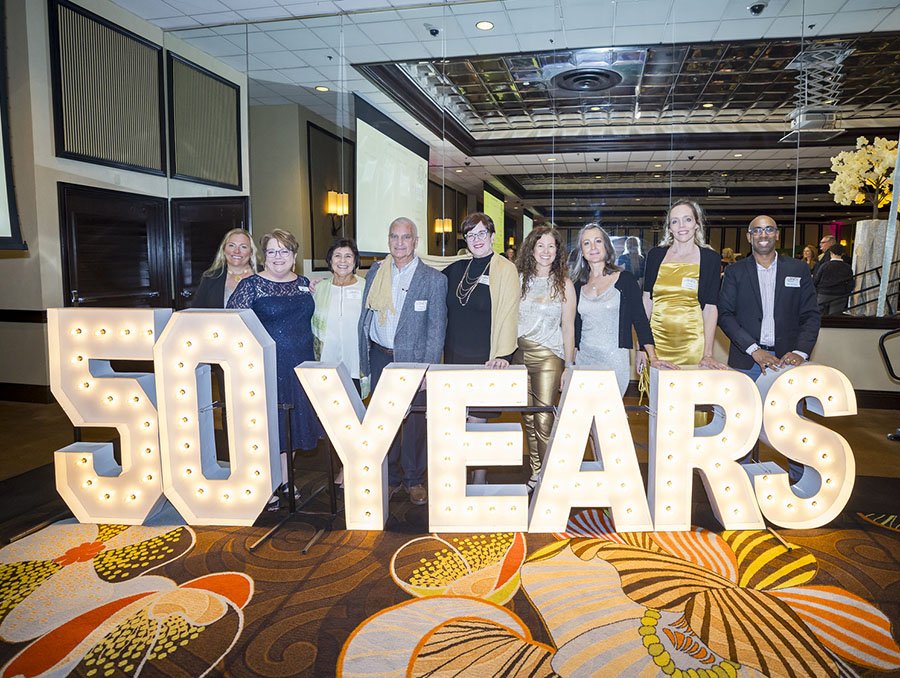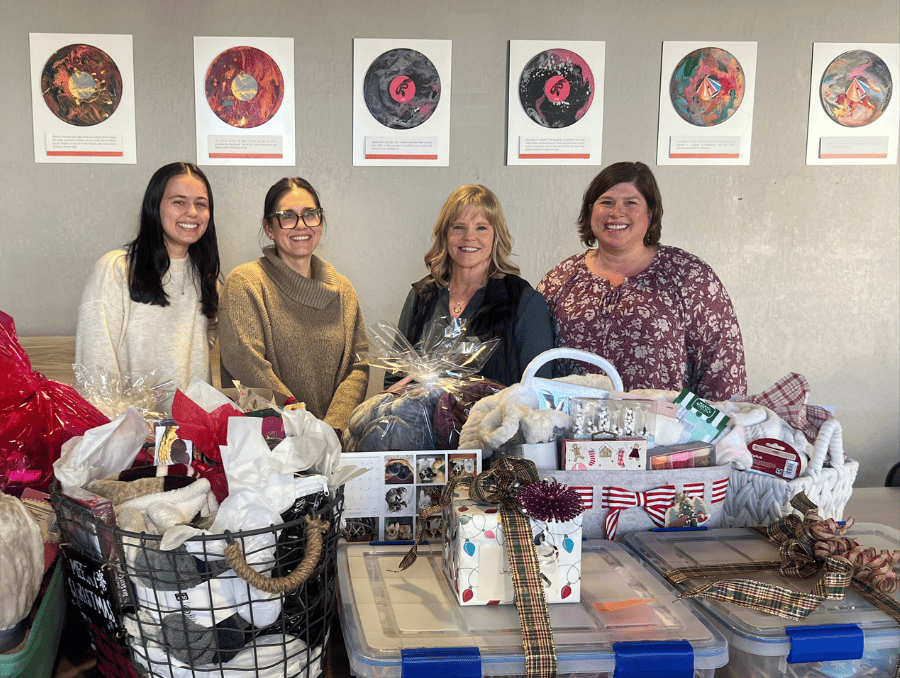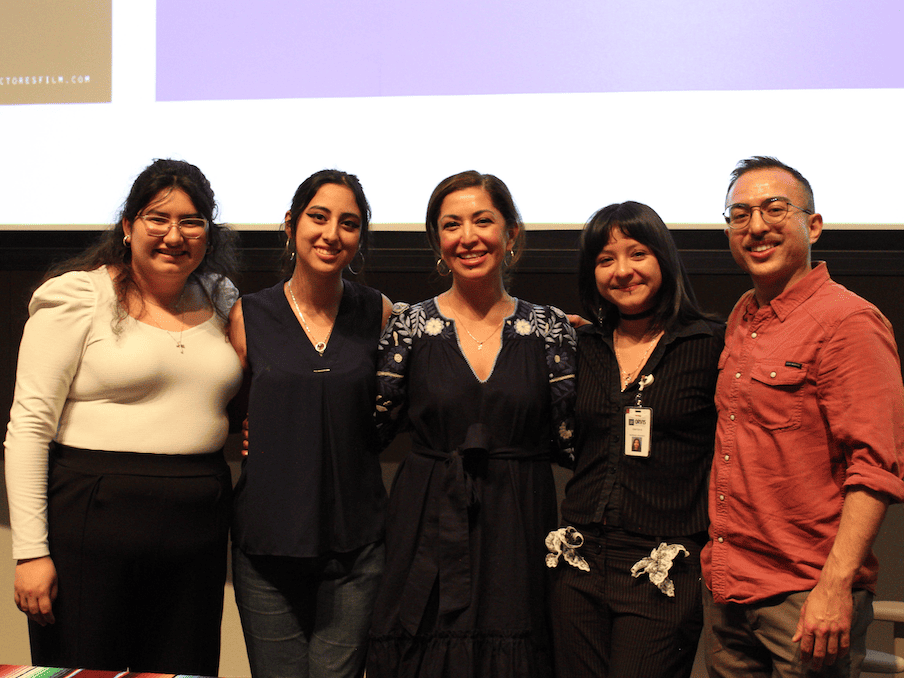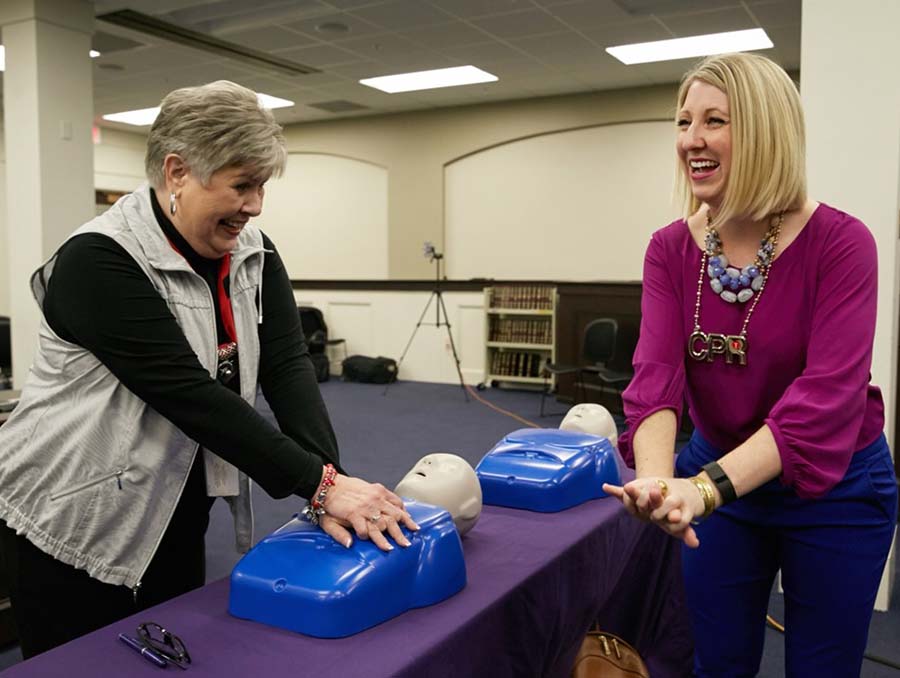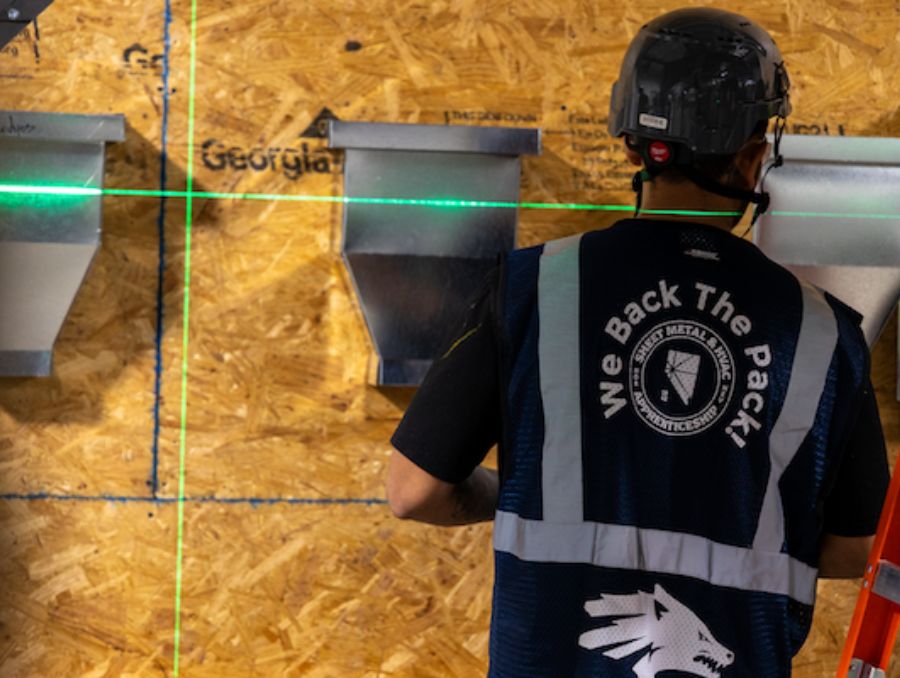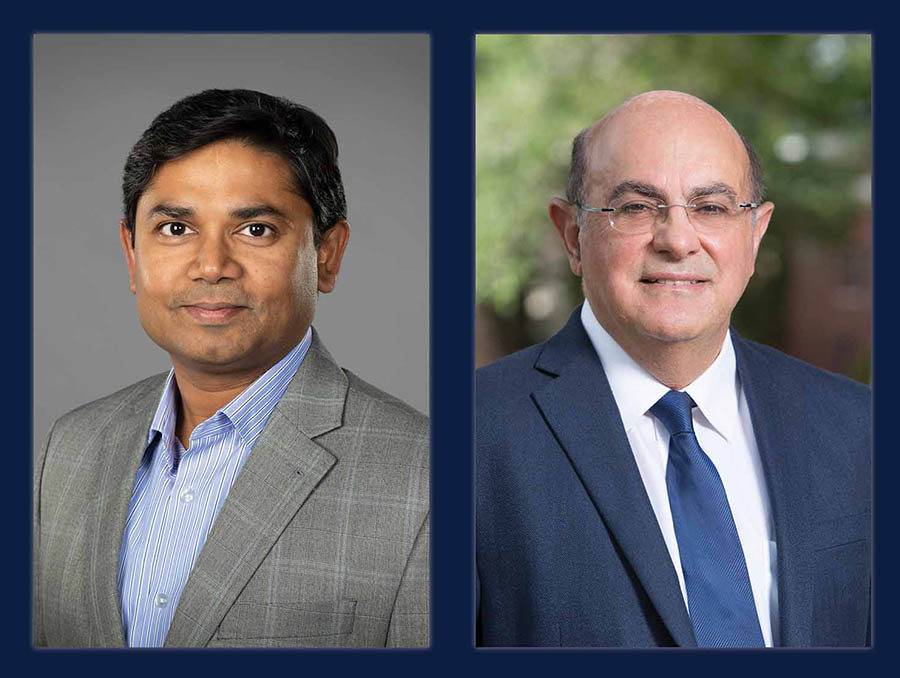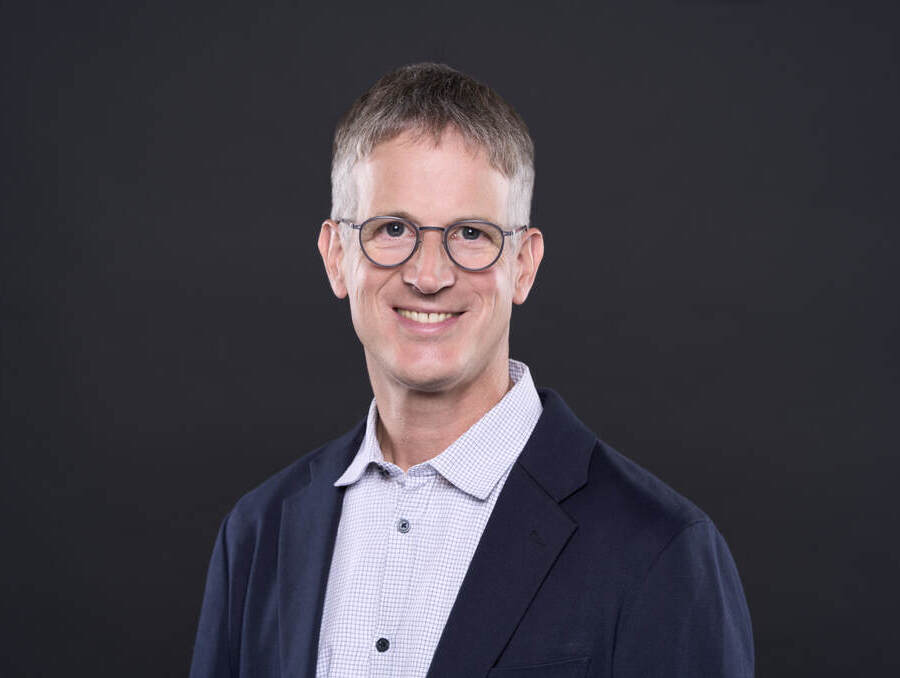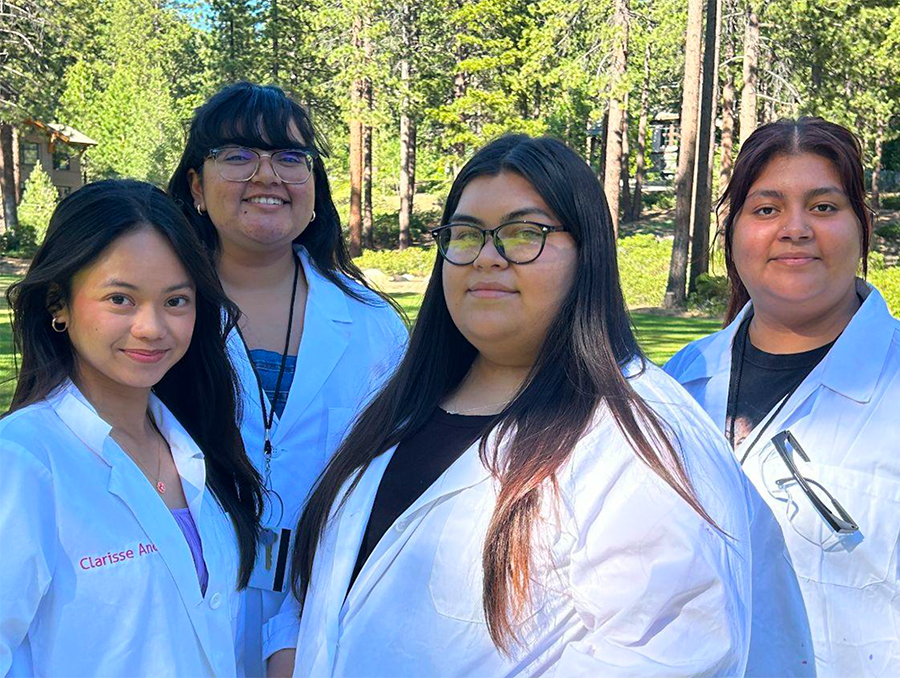From the basement of the Mackay Science Building on the University of Nevada, Reno quad, to their current location in the Nell J. Redfield Building, the University of Nevada, Reno School of Medicine (UNR Med) Department of Speech Pathology and Audiology has been doing important work for fifty years.
Speech pathology and audiology is a branch of medicine specializing in the diagnosis and treatment of a wide range of disorders that can affect hearing, balance, swallowing, speech, language and cognition. In addition, they also run a number of clinics that address the needs of specific populations.
“We have a partnership with Renown as part of the School of Medicine that expands Renown’s speech pathology services in the community,” Interim Chair of Speech Pathology & Audiology Tami Urbani Brancamp, Ph.D., said. “We offer assessments and intervention for all types of speech, language, cognitive and swallowing disorders.”
The department houses three degree programs — bachelor of science, master of science and doctorate — with an average of two hundred undergraduates, fifty graduates and a handful of Ph.D. students. In addition to these educational programs, the Speech Pathology and Audiology Department runs a number of clinics and social outreach programs.
For Dr. Brancamp these services are part of the University’s land grant institution requirement to give back to the community.
“Nobody’s lost sight of the real people that we’re here to serve,” she said.
According to the American Speech-Language-Hearing Association, the speech pathology and audiology profession is expected to grow much more rapidly than other health occupations. Dr. Brancamp believes her faculty are prepared for that growth.
“What I love about this department is that we have faculty who are really passionate about what they do,” she said. “In fifty years, we’re still going to be here. We will be serving the whole lifespan of our community members.”
Celebrating 50 years
On Thursday, Nov. 9, 2023, the department commemorated its continued commitment to education, research, and community impact during a 50th Anniversary Golden Reception.
The department has a long history that began even before the program was moved to the Division of Clinical Sciences in the School of Medical Sciences on July 1, 1973.
In a memo from then Associate Dean Thomas J. Scully, M.D., and Speech Pathology and Audiology Director Curtis E. Weiss, Ph.D., dated Jan. 30, 1974, a brief history of the program was laid out as part of a report put together for a Board of Regents meeting.
“The present faculty is composed of two Associate Professors and one Instructor with doctorate and master’s degrees, respectively. In addition, a Professor Emeritus of Speech Pathology is teaching one course this semester,” the memo said.
The memo also included immediate plans to develop a program concerned with children in the areas of speech pathology and audiology. They also wanted to improve their relationship with a local hospital to provide training and services for aphasia patients. Long-term goals included broadening the scope of the program and providing advanced practicum experiences for students.
Fifty years into the program, many of these goals have been fully realized. Some are continuing to grow and develop to this day.
The Northern Nevada Cleft Palate Clinic is a specialty offering within the department, which is currently run by Thomas Watterson, Ph.D., who was also the department chair for over 20 years. During an interview with Dr. Watterson, he laughed as he talked about the program’s original location on campus.
“When I came here in 1985, the program was housed in the Mackay Science Building, in the basement,” he said. “And there weren’t that many students either in the undergraduate or graduate program. I do remember the first year when I was here, I had a graduate class in craniofacial disorders that I was scheduled to teach, and there was one student in the class.
“It was a pretty dismal place to work,” he continued. “It flooded a lot. It was a typical basement. There were no windows. It actually had windows, but it had a dropped ceiling, and the ceiling was dropped over the windows.
“Our faculty has grown quite a bit since 1985. We have more teaching faculty and more clinic faculty than we did thirty years ago. And we have a new facility, of course.”
The department operates the Claude I. Howard Speech and Hearing Center in partnership with Renown Health. The faculty tends to the broad diagnosis and treatment needs of the community. In addition to these services, the department sponsors specialty clinics and programs run by the faculty:
“The faculty have specialty areas where they’re really known across the nation for their contributions,” Dr. Brancamp said. Each clinic focuses on a specific population or area of need, filling a gap that would otherwise be left without much-needed care.
- The University Center for Autism and Neurodevelopment
- The University Center for Autism and Neurodevelopment is a team assessment where psychiatry, psychology, speech pathology, occupational therapy, family, school, and others come together to assess and support children.
- Northern Nevada Cleft Palate Clinic
- The cleft palate clinic is made up of a team of providers that includes a speech pathologist, audiologist, ear nose and throat specialist, craniofacial surgeon, dentist, orthodontist, and pedodontist. The program maintains a caseload of about 150 children that they follow from birth to age eighteen.
- Aphasia Center of Nevada
- The Aphasia Center offers free psychosocial programming, twice-a-month conversation groups, and an aphasia book club to help patients engage in activities meaningful to them.
- Language and Literacy Development Center
- The LLDC provides comprehensive evaluations and evidence-based therapeutic services for children with developmental language disorders and literacy disorders such as dyslexia to improve children’s educational outcomes.
- Laboratory for the Investigation of Voice, Eating, and Swallowing (UNR LIVES)
- This research program involves university learners and community members in the assessment and treatment of voice, swallowing, and pediatric feeding disorders.
The next 50 years
As the department looks forward to the next fifty years, Dr. Brancamp said they will strive to expand their degree programs. More specifically, she says that the department will continue to innovate by exploring the latest technology and methods to help the community.
One program already in the works is the recent $20 million, five-year National Science Foundation-funded project looking into how artificial intelligence (AI) might help children with speech and language development. The grant will establish an AI Institute for Exceptional Education in cooperation with the University at Buffalo, the University of Illinois Urbana-Champaign, Stanford University, the University of Washington, Cornell University, the University of Texas at El Paso, Penn State University and the University of Oregon.
Also on the table is an opportunity to expand the bachelor’s degree program. Recent changes by the Nevada legislature have opened a promising avenue to help alleviate the lack of care in Nevada stemming from a lack of providers in the Speech Pathology and Audiology profession. The proposed solution is to create a Speech Language Pathology Assistant program.
“We have the opportunity to grow in the future to create a bachelor’s degree program so that if somebody only wants to go to the bachelor’s level, they can stop and have a very viable career,” Dr. Brancamp said. “That’s something we need to look at for the future and how that best serves the state and all our constituents.”
